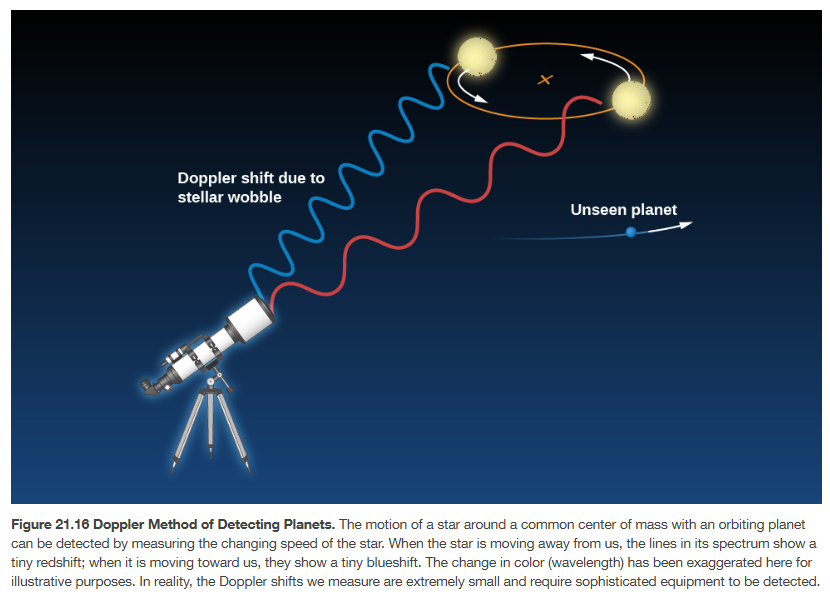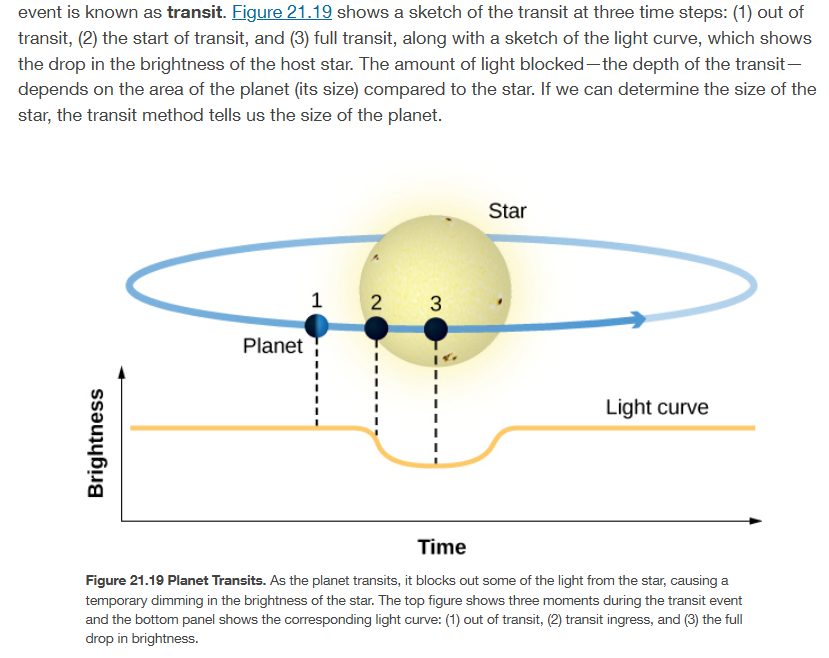chapter 21.3 evidence that planets form around other stars & 21.4 planets beyond solar system & 21.5
1/10
There's no tags or description
Looks like no tags are added yet.
Name | Mastery | Learn | Test | Matching | Spaced |
|---|
No study sessions yet.
11 Terms
how do planets form?
the gathering together of gas and dust particles in orbit around a newly created star
each dust particle is heated by the protostar and radiates in the infrared region of the spectrum
before any planets form, we can detect such radiation from all of the spread-out individual dust particles that are to become planets
we can detect the silhouette of the disk if it blocks bright light coming from a source behind it
planets must form in 3-30 millions years
radiation and our search for planets
once the dust particles gather together and form a few planets/moons, the majority of dust is inside planets
radiation can now be detected from the outside surfaces
the amount of infrared radiation is therefore the greatest before the dust particles combine into planets
search for planets begins with the search for infrared radiation from the material required to make them
disks around protostars
essential to star formation
nearly all very young protostars have disks
range in size from 10-1000AU
mass contained: 1-10% of Sun’s mass
observations of the disks can reveal presence of interstellar molecules, such as benzene, ethane, acetic acid and formaldehyde
how disks change with time can be used to estimate how long it takes for planets to form
age of protostar and subsequent qualities of disk
less than 1-3 million years old: disk extends all the way from very close to the surface of the star out to tens or hundreds of AU away
old protostars: disks with outer parts that still contain larges amounts of dust, but the inner regions have lost most of their dust. in these objects disk looks like donut
inner, dense parts of most disks disappear by the time the star is 10 million years old
accretion
the process where a celestial object grows in mass by gravitationally attracting and accumulating surrounding matter, typically gas and dust
can drive the rapid growth planets
exoplanet
planet outside of the solar system
most exoplanet detections are made using techniques where we observe the effect that the planet exerts on the host star
both the star and planet revolve about their common center of mass
doppler method of detecting planets


hot Jupiters
giant planets orbiting very close to their stars
transiting planets
transit: when the orbital plane of a planet is tilted or inclined so that it is viewed edge-on, we will see the planet cross in front of the star once per orbit, causing the star to dim slightly

superearths
most common planets
radii between 1.4-2.8 of Earth
mini-Neptunes
radii between 2.8-4.0 Earth radius